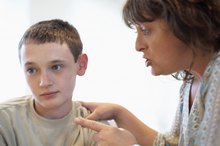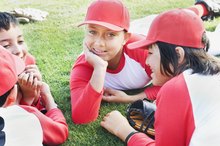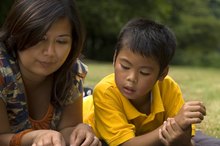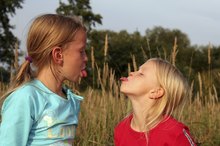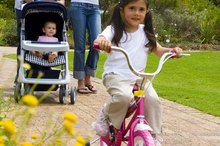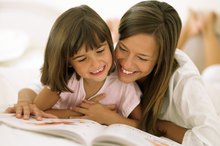What does fact checked mean?
At Healthfully, we strive to deliver objective content that is accurate and up-to-date. Our team periodically reviews articles in order to ensure content quality. The sources cited below consist of evidence from peer-reviewed journals, prominent medical organizations, academic associations, and government data.
The information contained on this site is for informational purposes only, and should not be used as a substitute for the advice of a professional health care provider. Please check with the appropriate physician regarding health questions and concerns. Although we strive to deliver accurate and up-to-date information, no guarantee to that effect is made.
Activities for Behavior Modification
Kids learn bad behavior by mimicking others. Children also learn from poor examples presented in media. The results of poor behavior influence your child's ability to do well in school and participate as a constructive member of the family 1. Activities that modify behavior help children avoid specific actions and learn constructive ways to substitute positive for negative behavior. The success of the modification activities depends on the child, parents and the amount of time spent teaching kids alternative ways to handle family, school and social situations.
Game Playing
Gaming allows kids to explore different behavior, and when played with family members or an adult, games teach appropriate actions. Commercially manufactured games offer a way to review specific behavior changes, but parent-made games can focus on targeting specific ways to change. The American Academy of Pediatrics says children frequently exhibit undesirable behavior when they are under stress or are angry or frustrated. Games introduce children to the behavior options available and allow kids to select from several appropriate behaviors. Children can see through gaming that there are several options to try before resorting to bad behavior.
- Gaming allows kids to explore different behavior, and when played with family members or an adult, games teach appropriate actions.
- Children can see through gaming that there are several options to try before resorting to bad behavior.
Modeling Fun
What Are the Techniques of the Total Transformation Program?
Learn More
Modeling activities teach children the correct behavior and reactions. Children sometimes behave badly in new or unfamiliar situations. It's not that the child intends to be bad, according to the AAP. Children don't always understand how to demonstrate appropriate actions. Modeling creates imaginary situations that show the child new behaviors that fit the event or situation. Parents can create a fun demonstration by incorporating simple rewards for modeling the correct actions. Fictional scenarios at home allow children to practice appropriate behavior before moving into real world situations.
- Modeling activities teach children the correct behavior and reactions.
- Fictional scenarios at home allow children to practice appropriate behavior before moving into real world situations.
Tracking Behavior
Formal charts keep track of behavior over a period of time. Once children learn a new behavior, charts help monitor the use of the new information. Formal charts also set reasonable expectations for families, teachers and children, according to the New Mexico Public Education Department. Parents and teachers use charts, along with positive reinforcement, to help children change behavior. Charts offer concrete proof of modifications. Positive reinforcement doesn't need to include food or cash, positive words of praise also give children reinforcement to continue to follow new behavior. Tracking appropriate behavior helps focus on the positive, rather than monitoring mistakes and punishing bad actions.
- Formal charts keep track of behavior over a period of time.
- Parents and teachers use charts, along with positive reinforcement, to help children change behavior.
Media Help
How to Deal With Your Kid's Bad Attitude in Sports
Learn More
Watching films and television programs and reading books help introduce and change behavior. These activities also introduce concepts for parents and children to discuss at home about poor behavior. Age-appropriate media encourages children to identify with the book character or movie or show actor. Previewing media helps parents direct the discussion to topics that tie directly into home behavior problems. Monitoring regular viewing controls the types of programming children see, and this helps avoid kids tuning into shows that feature negative behaviors.
- Watching films and television programs and reading books help introduce and change behavior.
- Previewing media helps parents direct the discussion to topics that tie directly into home behavior problems.
Related Articles
References
- Healthychildren.org: Family Life -- Changing Your Child's Behavior
- Centers for Disease Control and Prevention: Attention-Deficit/Hyperactivity Disorder (ADHD) -- Treatment
- Michael Manos, PhD. Phone interview/email correspondence. December 8, 2009 and January 18, 2010
Resources
Writer Bio
David B. Ryan has been a professional writer since 1989. His work includes various books, articles for "The Plain Dealer" in Cleveland and essays for Oxford University Press. Ryan holds degrees from the University of Cincinnati and Indiana University and certifications in emergency management and health disaster response.
